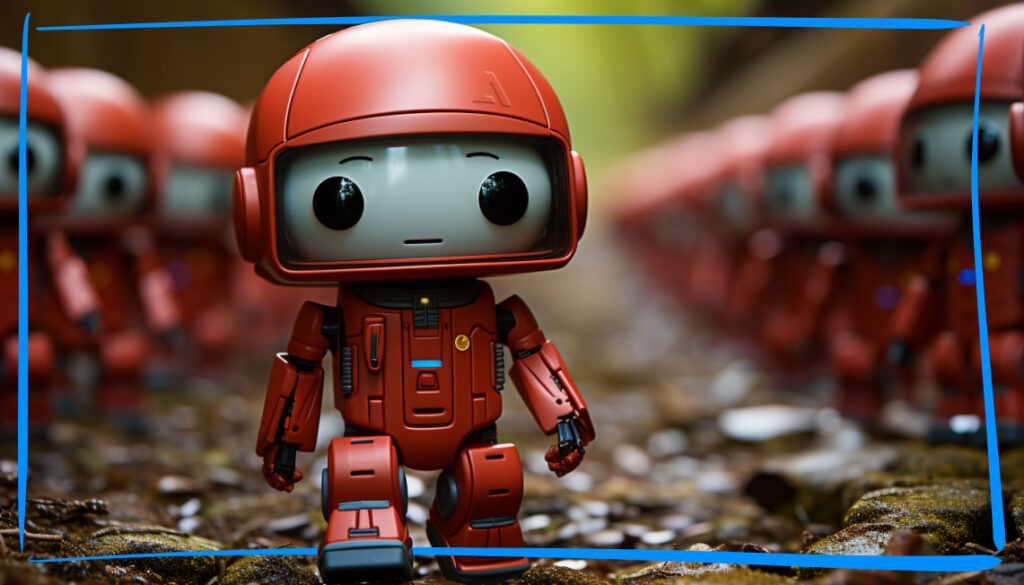If you’ve been watching TV lately, you might have noticed Adobe Photoshop is back in the advertising game. Yes, the brand that has become synonymous with image manipulation is reminding us all of its capabilities. But why now?
Adobe is acutely aware of the seismic shifts happening in the design world. Generative AI technologies are democratizing design, enabling virtually anyone to create graphics without the traditional barriers of a formal education or years of experience. While this is liberating for many, it poses existential questions for professional designers—questions that even Adobe seems to be wrestling with.
Take a quick glance at Photoshop’s homepage, and you’ll see their new positioning: “Everyone can Photoshop,” followed by “Generative AI is now in Photoshop (beta).” It’s a clear signal that Adobe is adapting to an evolving market, but at what cost?
Adobe’s acquisition of Figma was a business move to hold off a competitor that was encroaching on an emerging market (UX/UI design). Adobe knows how to identify and address impending threats. Now with the introduction of AI built into Photoshop, the message is clear: Adobe is willing to pivot—even if it means alienating its core audience of professional designers—in order to remain the go-to design tool for the masses.
And let’s not forget the rise of Canva, a platform that’s increasingly finding its way into conversations about design software. My Creator Economy Expo friend, Katie Brinkley, recently highlighted the wonders of combining ChatGPT and Canva for efficient content creation. It’s another sign that the design landscape is changing, and fast.
So, what does all this mean for us, the designers and marketers who have relied on Adobe for years? It’s a wake-up call. If Adobe is willing to shift its focus and potentially cannibalize its original user base, it’s a stark reminder that we too must adapt or risk becoming irrelevant.
When Adobe starts to pivot away from designers, it’s not just a business decision—it’s a harbinger of the challenges and opportunities that lie ahead for all of us in the design community.
News at the Intersection of AI and Design
🦾 Adobe Photoshop 25 Review: AI is Here to Stay
The article from Creative Bloq dives into the latest features of Adobe Photoshop 25, emphasizing how its new generative tools powered by AI are a game-changer for creatives.
- The new AI features include Generative Expand, which allows you to extend images beyond their original borders, and Generative Fill, which makes object removal and addition easier.
- Despite the AI advancements, the article notes that there aren’t many other new features. However, the generative tools alone are compelling enough for many to consider upgrading.
- I’ve used both, and they’re extremely helpful. I can’t wait until they’re available in the GA release.
😌 Design Made Easy: Microsoft’s AI-Powered Tool Now Right in Your Edge Browser
Microsoft has integrated its AI-powered design tool, Designer, into the Edge browser, making it super convenient for users to create various designs without needing to open a separate application.
- The tool allows users to create a range of designs like social media posts, flyers, and greeting cards directly within Edge’s sidebar. It even uses DALL-E-powered text-to-image generation for added creativity.
- This move not only streamlines the design process but also positions Microsoft to compete with other AI-powered design tools like Canva.
🎥 AI-to-Video Generator
We all know video is the future, but it’s a lot of work, or money, to create. Guess what? AI is going to solve that problem too (sorry video designers, it’s coming for you too)
- This allows you to type in your prompt, then watch it go to work.
- You can then choose to edit the voiceover, on-screen text, video clips, music, or whatever. And it’s inexpensive.
Watch the 7-minute overview video
New Resources for you

Report: AI Will Reach Human-Level Performance Much Earlier Than Originally Projected.
The accelerated development of generative AI has been greatly facilitated by advancements in computing power, data availability, and machine learning algorithms. A pivotal study conducted by McKinsey in 2017 predicted a much slower rate of progression for this technology.
At the time, the complexity of human-like text generation and the nuanced understanding of language seemed decades away. However, the reality has far outpaced these early predictions. AI is now able to generate text that is increasingly indistinguishable from human-authored content.

Platforms like ChatGPT by OpenAI and Midjourney have been game-changers. They’ve shifted how we perceive generative AI’s abilities. As designers, we’re familiar with seeing, feeling, and experiencing things tangibly. These platforms … Keep Reading
Okay, that previous article wasn’t new. But I had a birthday AND covid this past week, so something had to give.
Next week I’ll dive into the just-released Gartner Hype Cycle for Generative AI!
How can I help you?
If you want to learn more about what’s available, here are some links:
Thanks for reading!
-Jim
Want to join hundreds of other designers who are staying ahead of the coming AI wave?
Subscribe now to get the latest in AI and Design in your inbox each week.



